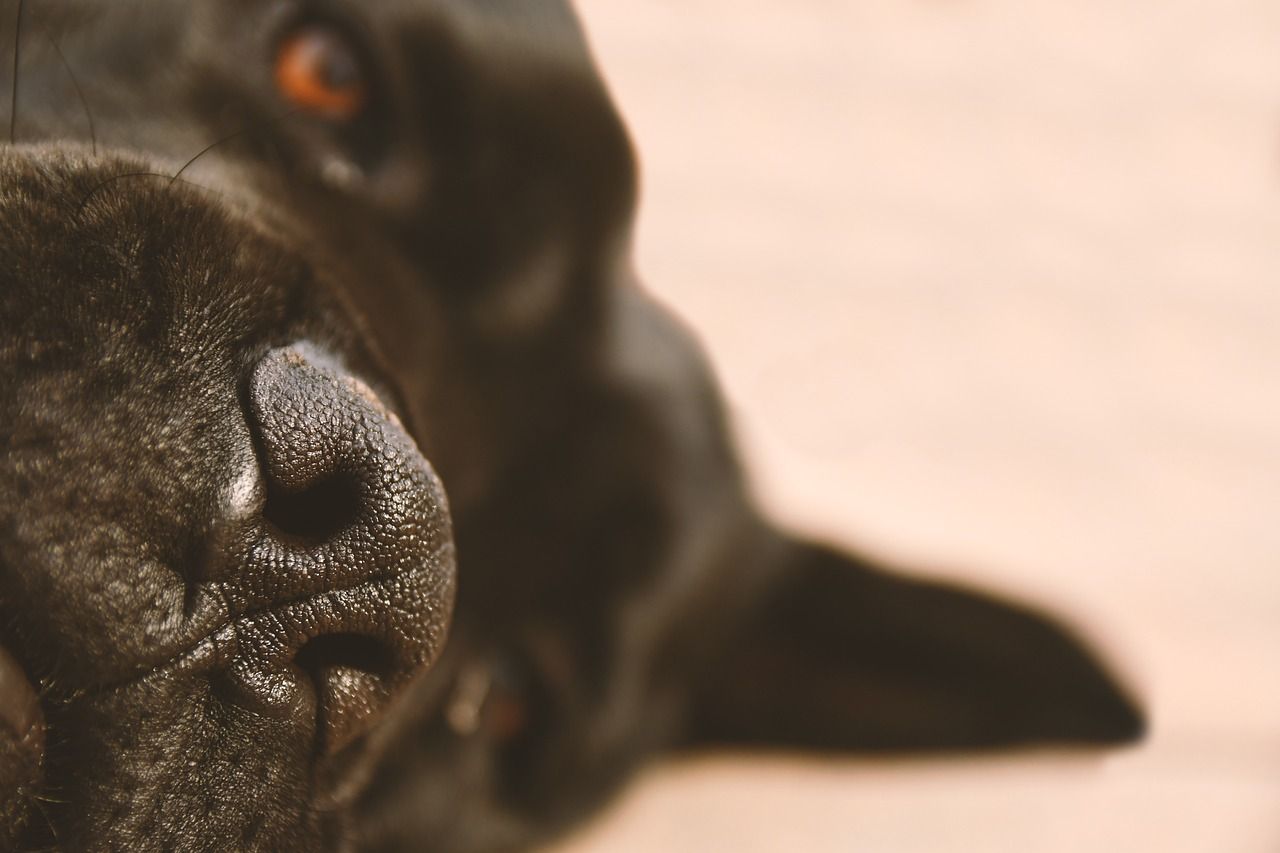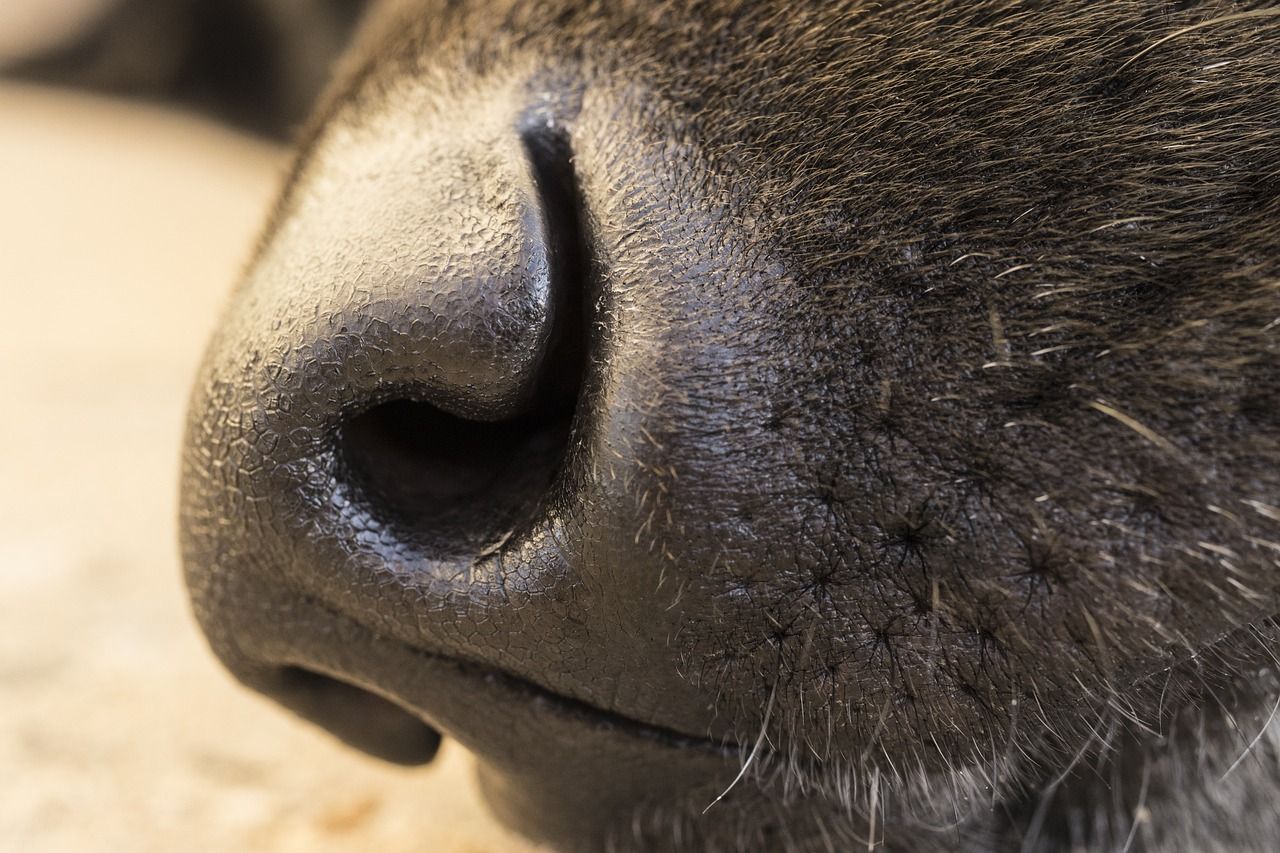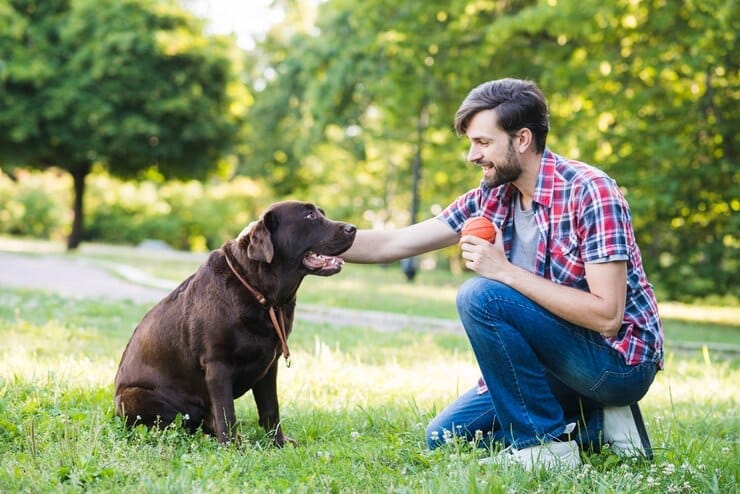
Dogs have an exceptional olfactory system that sets them apart from other animals. Their noses are equipped with an intricate network of scent receptors, allowing them to pick up even the faintest odors in their environment. While humans possess approximately 5 million scent receptors, the average dog boasts an astonishing 220 million to 300 million receptors! This vast difference in olfactory ability explains why dogs are often employed in search and rescue operations, drug detection, and even in some medical applications. Here, we will delve into the incredible sense of smell that dogs possess and explore how far a dog can smell.
The Incredible Sense of Smell in Dogs
A dog's sense of smell is truly extraordinary. It is estimated that a dog's nose is up to 100,000 times more sensitive than ours. This heightened olfactory ability is attributed to the specialized anatomy of their nose and the abundance of olfactory receptors they possess.
The Anatomy of a Dog's Nose
The structure of a dog's nose is designed for scent detection. It is not just a respiratory organ but a complex apparatus dedicated to capturing and analyzing odors. A dog's nose begins with the external nares, which are the openings through which air enters. From there, the air passes through the nasal cavity, which is lined with a highly specialized olfactory epithelium.
The Olfactory Receptors
The olfactory epithelium is where the magic happens. Dogs have a significantly larger surface area of olfactory receptors compared to humans. While humans have around 6 million olfactory receptors, dogs boast an impressive 220 to 300 million. These receptors are responsible for detecting and processing odors, allowing dogs to distinguish between a vast array of scents.
The sheer number of olfactory receptors in a dog's nose enhances their sensitivity to odors. It enables them to detect even the faintest of scents and discern individual components within complex smells. This ability is what makes dogs invaluable assets in fields such as search and rescue, medical detection, and even forensic investigations.
Understanding the intricate anatomy of a dog's nose and the role of olfactory receptors provides a glimpse into the extraordinary capabilities of their sense of smell. In the following sections, we will further explore the power of a dog's olfactory system and how it manifests in their everyday lives.
The Power of a Dog's Sense of Smell
A dog's sense of smell is an incredibly powerful tool that allows them to gather information about their environment and interact with it in unique ways. Let's explore how dogs utilize their extraordinary sense of smell.
How Dogs Use Their Sense of Smell
1. Environmental Exploration: Dogs use their sense of smell to explore and understand their surroundings. They can detect and analyze scents left by other animals, humans, or even specific objects. By sniffing the air and ground, dogs gather valuable information about the world around them.
2. Identifying Individuals: Dogs can recognize and distinguish between different individuals based on their unique scent profiles. This ability is why dogs are often used in search and rescue operations or for tracking down missing persons.
3. Tracking and Trailing: A dog's sense of smell allows them to follow scent trails left behind by people or animals. They can track scents over long distances, even if the trail is days old. This makes them invaluable in search and rescue missions, criminal investigations, and hunting activities.
4. Medical Detection: Dogs have the remarkable ability to detect changes in a person's body chemistry, which can be indicative of certain medical conditions. They can be trained to identify specific odors associated with diseases like cancer, diabetes, or seizures. Medical detection dogs are proving to be instrumental in early disease detection and providing support in managing various health conditions.
5. Emotional Detection: Dogs are known to pick up on human emotions through scent cues. They can sense fear, stress, or anxieties in humans, which often triggers their instinct to provide comfort and support.
6. Finding Food: A dog's sense of smell helps them locate food sources. Even small traces of scent can guide them to hidden treats or help them in hunting and foraging activities.
The incredible power of a dog's sense of smell is not only fascinating but also has practical applications in various fields. From search and rescue operations to medical assistance and everyday tasks, dogs continue to showcase their exceptional olfactory abilities.

Search and Rescue Dogs
Search and rescue dogs play a crucial role in locating missing individuals in various situations. Their keen sense of smell and tracking abilities make them invaluable assets in search operations. Here's how they contribute to these critical missions:
1. Tracking Missing Persons: Search and rescue dogs are trained to follow scent trails left by missing individuals. They can pick up and discriminate between different scents, allowing them to track specific individuals even in complex environments.
2. Trailing in Challenging Conditions: These highly trained dogs can follow scent trails in challenging conditions, such as dense forests, rugged terrains, or areas affected by natural disasters. Their ability to navigate difficult environments helps search and rescue teams cover vast areas more efficiently.
3. Locating Disaster Victims: Search and rescue dogs excel in locating disaster victims, whether trapped under rubble or lost in remote areas. Their ability to detect even faint scents helps them identify survivors, leading to more successful rescue operations.
4. Swift Response: Time is of the essence in search and rescue missions, and search dogs can cover large areas quickly, reducing search time and increasing the chances of finding missing persons promptly.
Medical Detection Dogs
Medical detection dogs have demonstrated remarkable capabilities in identifying specific odors associated with various medical conditions. Their skills have proven to be valuable in different healthcare settings. Here's how they contribute to medical detection:
1. Disease Detection: Medical detection dogs can be trained to detect the scent of certain diseases, including cancer, diabetes, Parkinson's disease, and bacterial infections. Their ability to identify unique odors associated with these conditions can aid in early detection and diagnosis.
2. Alerting to Medical Events: Some dogs are instructed to recognize specific medical events or changes in a person's body chemistry. For instance, they can alert individuals with diabetes to dangerous blood sugar levels or detect oncoming seizures in individuals with epilepsy.
3. Assistance in Managing Conditions: Medical detection dogs provide practical support to individuals with medical conditions. They can fetch medication, alert caregivers during emergencies, or provide comfort and emotional support to those in need.
4. Research and Development: Dogs are instrumental in the research and development of medical detection techniques. Their exceptional sense of smell helps scientists better understand the unique odors associated with various diseases, leading to improved diagnostic tools and treatments.
Search and rescue dogs and medical detection dogs showcase the incredible capabilities of a dog's sense of smell. Their contributions to saving lives, whether in emergencies or medical settings, highlight the unique bond between humans and these remarkable animals.
The Distance a Dog Can Smell
Determining the exact distance a dog can smell is a complex task, as it depends on various factors. However, it is widely accepted that a dog's sense of smell can reach impressive distances compared to humans.

Factors Affecting a Dog's Sense of Smell
Several factors influence the range and effectiveness of a dog's sense of smell. Understanding these factors can help us appreciate the incredible capabilities of their olfactory system.
1. Breed: Different dog breeds have varying degrees of olfactory abilities. Some breeds, like Bloodhounds and Basset Hounds, are known for their exceptional sense of smell and tracking skills.
2. Training and Experience: Dogs trained for specific tasks, such as search and rescue or detection work, undergo rigorous training to enhance their olfactory capabilities. Training can sharpen their scent detection skills and improve their ability to discriminate and follow specific odors.
3. Environmental Conditions: The environment plays a crucial role in scent detection. Factors like humidity, temperature, wind direction, and air quality can impact the dispersal and concentration of odors, ultimately influencing a dog's ability to detect them accurately.
4. Type of Scent: The nature of the scent itself affects a dog's ability to detect it. Some scents are highly volatile and easily picked up by dogs, while others may require more concentration or specific training to be identified.
5. Distractions: Dogs can be easily distracted by other scents or environmental stimuli. Noises, competing smells, or unfamiliar surroundings can divert their attention and potentially hinder their scent detection abilities.
While it is challenging to quantify the exact distance a dog can smell, it is safe to say that their sense of smell is far more powerful and sensitive than our own. Dogs have been known to track scents over vast distances and detect odors at extremely low concentrations.
Understanding the factors that affect a dog's sense of smell allows us to appreciate their remarkable abilities and utilize them in various practical applications, from search and rescue operations to medical detection and even everyday tasks like locating lost items.
Scent Trails and Tracking
Dogs are exceptional at following scent trails. They can detect minute particles of scent left behind by a person or animal and track them over long distances. Scent trails can remain for days, allowing dogs to track down missing individuals or locate hidden objects.
Impressive Examples of Dogs' Sense of Smell
There have been numerous incredible examples showcasing the impressive capabilities of a dog's sense of smell. Dogs have been known to detect drugs, and explosives, and even locate ancient artifacts buried deep underground. Their ability to sniff out hidden objects or substances has proven invaluable in various fields, from law enforcement to archaeology.

Training and Enhancing a Dog's Sense of Smell
Owners can actively engage in training activities to enhance and stimulate their dog's sense of smell, providing mental and physical enrichment.
Scent Training:
Scent training involves teaching a dog to recognize and indicate specific scents. This training can be a fun and rewarding activity for the owner and the dog. Here's how to get started:
1. Choose a Target Scent: Select a specific scent that you want your dog to recognize, such as a particular essential oil or a specific item like a toy or cloth.
2. Introduce the Scent: Allow your dog to become familiar with the scent by placing it in their environment or on an object they regularly interact with. Encourage them to sniff and investigate the scent.
3. Associate the Scent with Rewards: Pair the target scent with positive reinforcement, such as treats or praise. When your dog shows interest or indicates the scent, reward them immediately. Repeat this process to reinforce the association between the scent and the reward.
4. Introduce the Search Game: Hide the scented object in a specific location and encourage your dog to find it using their sense of smell. Start with simple hiding spots and gradually increase the difficulty as your dog becomes more proficient. Reward them each time they successfully locate the scent.
Fun Activities to Stimulate a Dog's Sense of Smell:
Various games and activities can stimulate a dog's sense of smell. These include hiding treats or toys and encouraging the dog to use its nose to locate them. Puzzle toys, scent-tracking games, and even participation in scent work detection competitions can all provide mental and physical stimulation for a dog.
Conclusion
The sense of smell in dogs is truly remarkable. With their intricate nasal anatomy and an abundance of olfactory receptors, dogs possess an extraordinary ability to detect scents and interpret the world around them. From search and rescue operations to medical detection, dogs continue to demonstrate their indispensable value to humans. Understanding and appreciating a dog's sense of smell can deepen our connection with these remarkable animals.
FAQs
1. Can all dogs smell equally well?
No, the sense of smell can vary between dog breeds. Some breeds have a more developed sense of smell than others, making them better suited for scent-related tasks.
2. How does a dog's sense of smell compare to human smell?
A dog's sense of smell is significantly more powerful than that of humans. Dogs have many more olfactory receptors, allowing them to detect and analyze scents at a much greater level of detail.
3. How do dogs track scents over long distances?
Dogs track scents by following the trail of odor molecules released by the target. They can detect and distinguish these molecules, even in trace amounts, helping them navigate and locate their target.
4. Are there any limitations to a dog's sense of smell?
While a dog's sense of smell is extraordinary, it is not infallible. Factors such as wind direction, humidity, and the presence of other strong odors can affect a dog's ability to detect and track scents accurately.
5. How can I train my dog to use its sense of smell?
Training your dog to utilize its sense of smell involves scent discrimination exercises, introducing target odors, and rewarding your dog for correctly identifying and alerting to specific scents. Professional trainers can provide guidance in this area.

